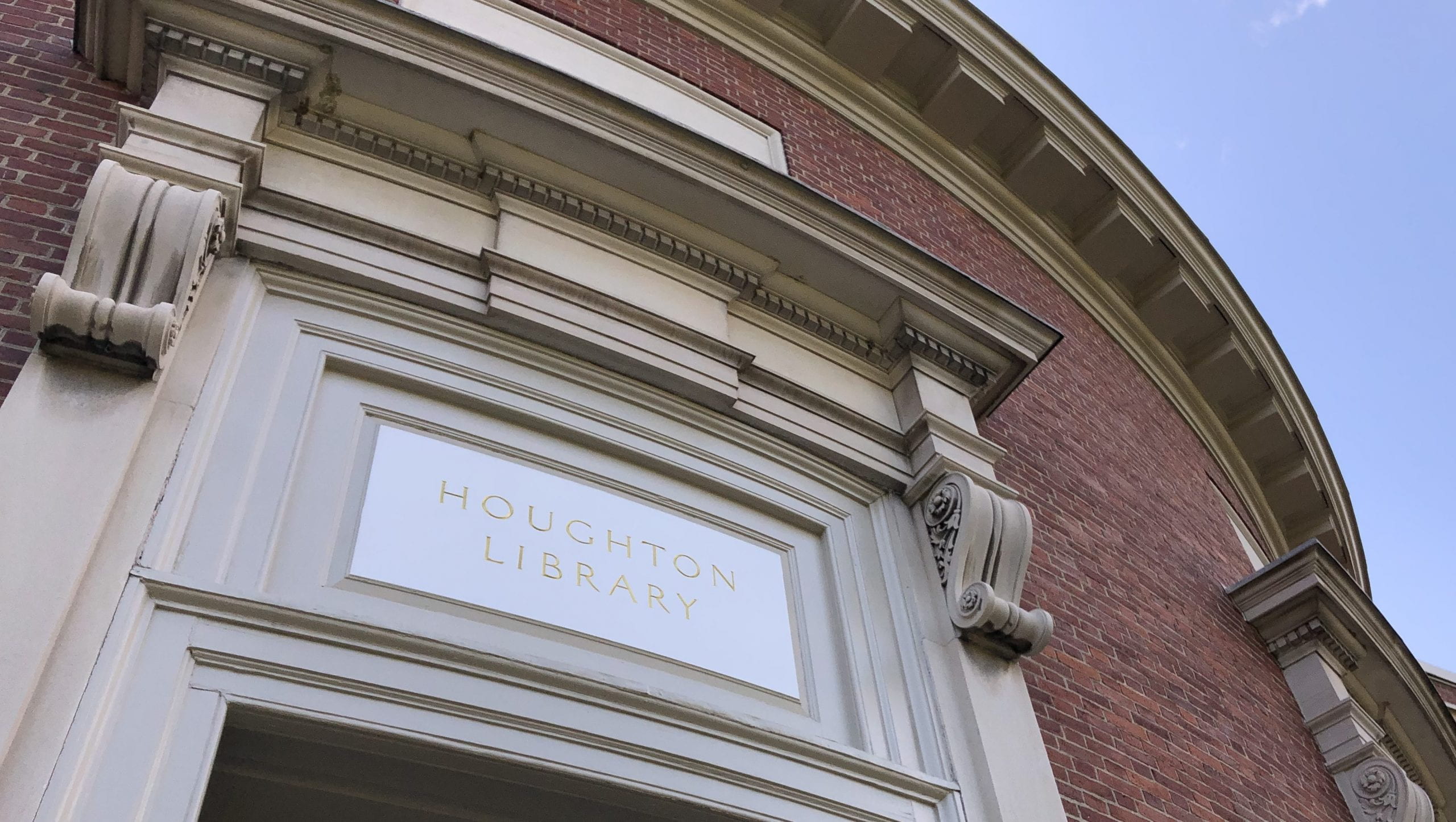A recent issue of the United Kingdom’s National Trust Arts, Buildings, Collections Bulletin (Winter 2013-2014) includes a report by Jane Gallagher, Senior Curator for the Midlands, that describes an important acquisition by the Trust and a summer loan from the Victoria and Albert Museum, London, and draws on a Houghton Library collection to connect the two.
Philip Webb (1831-1915) worked with William Morris to create some of the iconic masterpieces produced by Morris & Co. The Forest is one of two tapestries designed by Morris incorporating studies of birds, animals and plants designed by Webb and set in a swirling design of acanthus leaves. The tapestry was woven in 1887 at Merton Abbey and exhibited in 1890 at the London Arts & Crafts Exhibition; it was acquired by the Victoria and Albert Museum in 1926. Webb’s drawings were much admired and sold by Sydney Cockerell, Morris’s executor, to Laurence W. Hodson (1864-1933), an avid collector of Morris’s Kelmscott Press imprints and an Arts & Crafts enthusiast. Letters in Houghton Library’s MS Eng 1742 document Hodson’s purchase of the drawings in 1900 to benefit Webb who was in financial difficulties. Other letters in this collection record Cockerell’s concerns when Hodson himself experienced financial difficulties in 1906 and was forced to sell much of his collection of the Kelmscott Press. As Hodson’s situation deteriorated Cockerell wrote to him on 18 July 1909: “What about Webb’s beasts? Are you parting with them?” Hodson did not sell them and they were retained after his death by his family; they were sold at auction in February 2013  and acquired by the National Trust for Wightwick Manor, Wolverhampton, which contains a large collection of the works of Morris & Co. and is less than a mile from Hodson’s house, Compton Hall. The letters were sold in April 2013 and are now Houghton Library MS Eng 1742.
and acquired by the National Trust for Wightwick Manor, Wolverhampton, which contains a large collection of the works of Morris & Co. and is less than a mile from Hodson’s house, Compton Hall. The letters were sold in April 2013 and are now Houghton Library MS Eng 1742.
The Forest tapestry will be on display from May through October 2014 at Wightwick Manor, Wolverhampton, beside the recently acquired drawings, their history documented by a Houghton Library collection.
Thanks to William P. Stoneman, Curator of Early Books and Manuscripts, for contributing this post.


